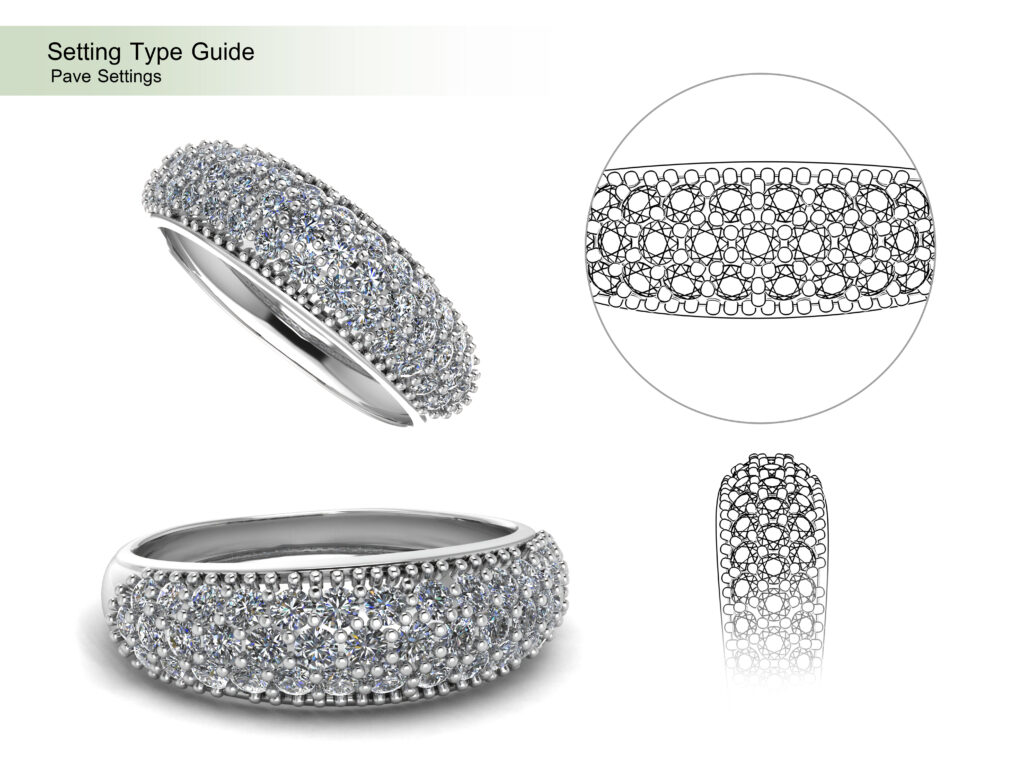The pave setting is the way to go if you are fascinated with sparkles and want your jewellery to “shine bright like a diamond.” The romantic appearance of the jewellery is obtained due to the dazzling setting style, which helps hide the metal with the coverage of diamonds.
Pave setting
Acquired from the French word “pave” the word pave means “to pave”. To cover a piece of jewellery, little diamonds are kept in place by tiny metal beads. This gives an impression of an illuminated trail that grabs the center diamond’s attention. The metal beneath the diamonds is so densely placed that it cannot be separated from the diamond.

Types of pave setting
Micro Pave
This type of setting is used when accent diamonds are put close together to cover a full band or showcase an all-surface effect.This emphasises the diamonds while diminishing the appearance of the metal. It can hold at least 50 tiny diamonds, if not more. To accomplish this setting, jewellers must work with a high level of precision and perfection.
Petite Pave
The petite pave setting is somewhat like the classic pave setting, except the diamonds are put closely together, held in a place by exceedingly little prongs. It makes the diamond more noticeable and brighter.
French Pave
The front of the French Pave, also known as fishtail pave, has elaborate V-shaped metalwork that resembles the edges of a fishtail, allowing more light to hit the stone while revealing less metal on the top of this setting. This setting is highly unusual because of its fascinating texture and detailed artistry.
U-Cut Pave
This type of setting is the most common one. It comes from the u-shaped cutouts that are carved into the metal. The diamonds are set into those cutouts creating a wavy or scalloped pattern. The ratio of diamond to metal is higher in this case, allowing better light reflection
Bright Cut
Bright cut pave, often known as channel-set pave, is a typical pave setting. It is ideal for accent stones that require additional endurance as this setting is held by two metal walls. The diamond sparkle is less likely to occur due to the ratio metal to diamond which is higher.
